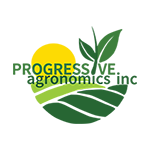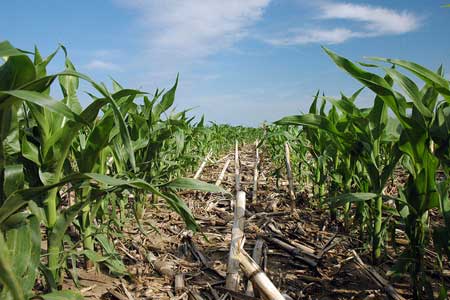For some, the prospect of growing corn following corn is challenging and promising. For others, in contrast to a corn following soybean (SB-C) rotation, the corn following corn (C-C) rotation imparts concern and consternation.
Harvest efficiency, animal feed production, USDA program compliance or soil erosion management, soil type, and water management or access to irrigation are among the many reasons a farmer may pursue a C-C rotation. Whatever the reason(s), astute C-C farmers know that success depends on careful management, beyond the demands of the SB-C rotation.
The C-C rotation typically means more tillage due to more residue and cooler, wetter soils at planting when compared to SB-C. There is also a higher potential for diseases and corn rootworm (CRW) and the need for greater overall nitrogen and sulfur throughout the year. With these management factors in mind, we know that we can achieve a successful C-C rotation.
Given a choice between two adapted hybrids, plant the hybrid with insect traits for corn rootworm protection. Beck’s provides farmers with choices in CRW-resistant hybrids from all the major trait providers: Optimum® AcreMax® XTreme or Qrome® products; SmartStax® Rib Complete®; and the Agrisure Duracade® traits. The soil environoment in a C-C rotation has higher potential for pests, but Beck’s Escalate® yield enhancement system offers maximum protection against early-season diseases and insects on all corn hybrids.
The C-C rotation often presents challenges to emergence, early-season growth, and higher disease pressure. Use emergence, disease, and corn following corn scores provided by Beck’s to better select a hybrid for C-C production.
A good strategy for a C-C rotation is to increase the seeding rate by 1,500 to 2,000 seeds/A.; the less-conducive seedbed and challenging emergence conditions of C-C require additional seeds. The goal is to hedge population to have enough plants to drive optimum yield performance.
PFR Proven practices and products can help ensure more successful C-C rotations. First and foremost is seed placement, including seeding depth, seed-to-soil contact, and seed spacing. Regardless of the type or extent of tillage ahead of planting, row cleaners are a must to manage residue ahead of the planter unit and to enable the critical operation for seed furrow development. Row unit downforce controls depth and seed spacing. Fundatmentally, positioning phosphorus (P) as an in-furrow starter (“pop-up”) fertilizer is necessary to reduce risk in the C-C rotation.
As we drive the C-C rotation to the next level, S and N management (rate, timing, and placement) and growing season disease management must address the following:
- Sulfur rates and availability
- Sidedress N
- Fungicide use and optimal timing
New to the PFR Proven portfolio is 2x2x2 placement of N and S nutrients with the planter; the emphasis here is positioning the nutrients (in liquid form) on either side of the row. Beyond availability to the early growth of the plant, this practice enables farmers to safely apply these two nutrients at higher rates without an increase in injury potential to the young plant.
Sulfur demand for a successful C-C is approximately 20% higher than in a SB-C rotation. For example, if 20 lb./A. is your number in SB-C, 24 lb./A. should be your base in a C-C rotation. Remember to have the bulk of your S applied and available by the V3 growth stage.
Because the C-C rotation does not provide a soybean N credit, most soils will need an additional 40 lb./A. of N. Experienced corn farmers have found that being early with their sidedress N applications pays dividends. For example, if the goal of a SB-C rotation is to have all sidedress applications complete by the V6 growth stage, than you should aim for the V4 growth stage in a C-C rotation.
Finally, the C-C rotation’s natural higher disease potential drives the need for careful management of foliar fungicides; this starts with scouting for disease presence and pressure. VT timing for application of a preventative and curative fungicide is essential in a C-C rotation. Timing the application at the VT growth stage is more beneficial in a C-C rotation than a brown silk, (growth stage R2), application.
In summary, success in a C-C rotation is fully achievable. The solution is to consider specific management strategies.
Good Luck
~Mike Blaine, CCA – Field Agronomist

